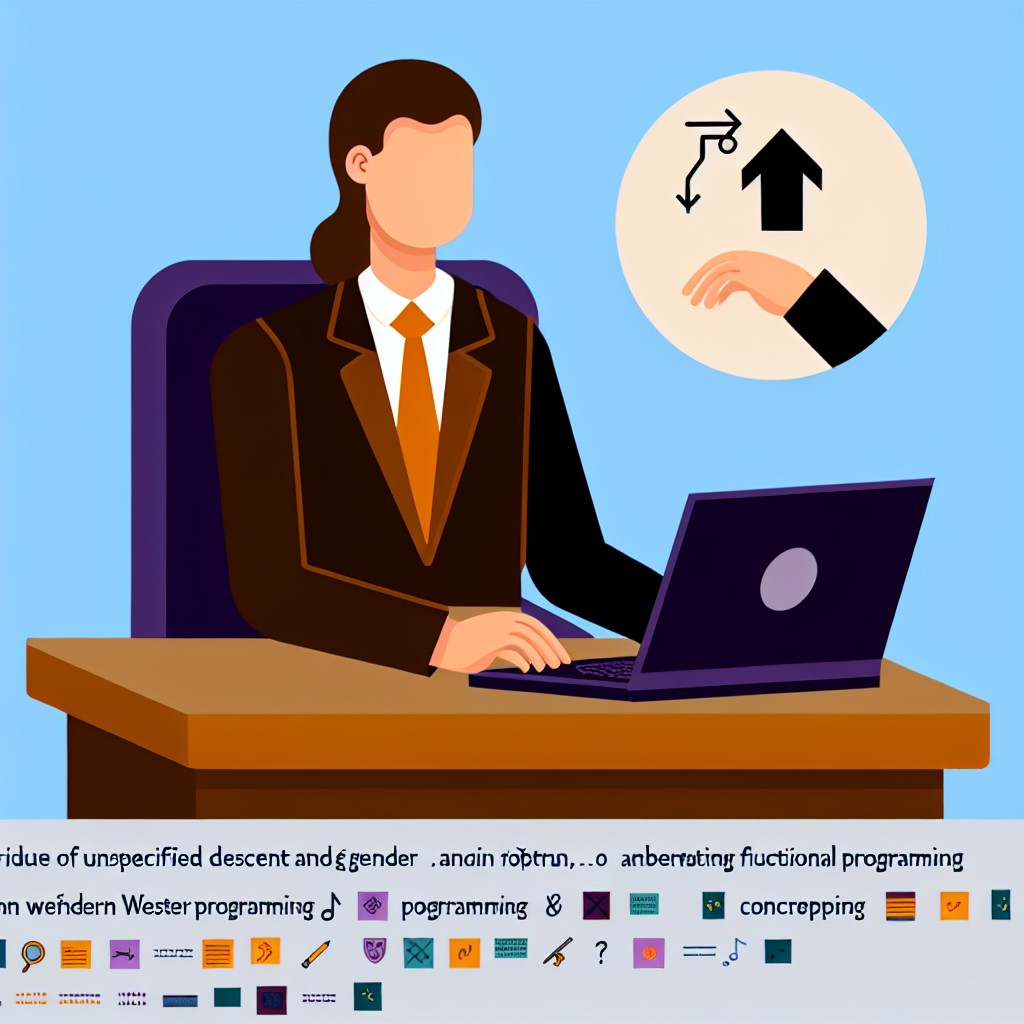Introduction to the Evolution of Programming Paradigms
Emergence of Procedural Programming
Programming began as a way to instruct computers step-by-step.
Early languages like Fortran emphasized procedural approaches for scientific calculations.
Developers coded sequences of commands that modified program state explicitly.
This method helped solve complex numerical problems efficiently at the time.
However, managing larger codebases grew challenging with procedural style.
Transition to Object-Oriented Concepts
Consequently, programmers explored ways to organize code more modularly.
Object-oriented programming introduced encapsulation and data abstraction to address this.
Languages like Smalltalk and later C++ gained popularity by embodying these ideas.
This shift improved code reuse and maintenance through objects and classes.
Still, some issues like side effects and state management persisted.
The Rise of Functional Programming
Meanwhile, functional programming emerged from mathematical roots emphasizing pure functions.
It avoids mutable state and side effects while promoting immutability.
Languages such as Haskell and Scala gained attention for this paradigm.
Moreover, functional style simplifies parallel and concurrent programming challenges.
Today, many developers adopt functional concepts alongside procedural and object-oriented ones.
Implications of Paradigm Evolution on Software Development
Each paradigm shift reflects evolving needs of software complexity and developer productivity.
Legacy languages like Fortran laid the groundwork for modern approaches.
Furthermore, understanding these paradigms helps developers choose suitable tools.
It also inspires innovations in language design and programming techniques.
Ultimately, embracing these changes drives the advancement of software development.
The origins of programming: Understanding Fortran and its impact
Development of Fortran
Fortran emerged in the 1950s as one of the earliest high-level programming languages.
IBM led the project, with John Backus heading the team that created it.
They aimed to simplify programming by using English-like statements instead of machine code.
This innovation allowed scientists and engineers to write code more efficiently.
Consequently, Fortran significantly reduced development time for complex calculations.
Key Features of Fortran
Fortran introduced features such as variables, loops, and conditional statements.
It supported mathematical notation, which appealed to scientific users.
Moreover, it included subroutines and functions to promote code reuse.
These elements helped programmers solve scientific problems systematically.
Fortran’s syntax was straightforward, increasing accessibility for new programmers.
Influence on Computing and Industry
Fortran became the standard language for scientific and engineering applications.
Universities and research labs widely adopted it for simulations and modeling.
Major companies like General Electric relied on Fortran for technical computing tasks.
Its influence persisted, guiding the design of subsequent programming languages.
Therefore, Fortran laid the foundation for modern computational science and programming paradigms.
Put Your Tech Company on the Map!
Get featured on Nicholas Idoko’s Blog for just $50. Showcase your business, boost credibility, and reach a growing audience eager for tech solutions.
Publish NowImperative Programming
Core Principles
Imperative programming centers on changing program state through statements.
Developers write sequences of commands that modify variables step by step.
This approach emphasizes explicit control flow and state management.
Programs typically execute instructions in a top-down manner.
It heavily relies on control structures like loops, conditionals, and procedure calls.
Variables store data that changes throughout the program’s execution.
Instructions directly manipulate memory and data representations.
State mutation plays a crucial role in this programming style.
Widespread Adoption
Imperative programming gained popularity with early languages like Fortran and C.
For example, Fortran revolutionized scientific computing in the 1950s.
Many industries adopted imperative languages for their efficiency and control.
Companies such as Raytheon Technologies relied on C for embedded systems.
Imperative paradigms became foundational in computer science education.
Toolchains and compilers extensively optimized code following this model.
Additionally, imperative programming aligned well with hardware architectures.
Its direct manipulation of memory suited early machine designs perfectly.
Consequently, imperative programming formed the backbone of decades of software development.
Find Out More: The Rise of DevOps: A Timeline of Software Development Transformation
The Rise of Object-Oriented Programming and Its Paradigm Shift
Emergence of Object-Oriented Concepts
Object-oriented programming (OOP) emerged in the 1980s as a new way to organize code.
Developers sought models that reflected real-world entities more naturally.
Consequently, programming shifted from procedural to modular structures.
Languages like Smalltalk and C++ played crucial roles in popularizing OOP.
Furthermore, OOP introduced encapsulation, inheritance, and polymorphism as core principles.
Impact on Software Development
OOP allowed developers to create reusable and maintainable code more efficiently.
Teams could collaborate better through clearly defined objects and interfaces.
This approach reduced bugs by hiding internal object states.
Moreover, object hierarchies supported code extension without modification.
Companies such as Microsoft and Borland adopted OOP in their flagship products.
Shift in Developer Mindset
Programmers transitioned from thinking in sequences of instructions to designing interacting objects.
This cognitive shift improved problem-solving approaches for complex software systems.
Consequently, developers began modeling applications after real-world scenarios.
The use of UML diagrams helped visualize object interactions and system architecture.
Training programs and textbooks adapted to teach OOP concepts extensively.
Challenges and Criticisms
Despite its benefits, OOP received criticism for potential overcomplication.
Some projects suffered from excessive class hierarchies and tight coupling.
Put Your Tech Company on the Map!
Get featured on Nicholas Idoko’s Blog for just $50. Showcase your business, boost credibility, and reach a growing audience eager for tech solutions.
Publish NowAdditionally, beginners often struggled to grasp abstract concepts initially.
Performance concerns arose in early implementations due to added complexity.
Nevertheless, ongoing refinements helped address many of these issues.
OOP’s Legacy and Influence on Modern Paradigms
OOP remains a foundation for many current programming languages and frameworks.
Languages like Java, Python, and C# integrate OOP principles extensively.
Additionally, the paradigm influenced newer approaches such as component-based and service-oriented architectures.
Transitioning to functional programming often builds on the lessons learned from OOP.
Thus, the rise of OOP marked a pivotal paradigm shift in software engineering history.
Delve into the Subject: Legacy Software: Why Companies Still Rely on Decades-Old Systems
Functional Programming Fundamentals and Its Contrast with Procedural Styles
Core Principles of Functional Programming
Functional programming emphasizes the use of pure functions without side effects.
It relies on immutability, meaning data cannot be changed after creation.
This paradigm treats functions as first-class citizens, enabling their use as values.
Additionally, it promotes declarative code that expresses what to do, not how to do it.
Higher-order functions play a key role in functional programming by accepting other functions as arguments.
Languages like Haskell and Elixir exemplify these functional programming principles effectively.
Procedural Programming Characteristics
Procedural programming organizes code as a sequence of instructions to execute.
It often involves changing program state through mutable variables.
This style focuses on routines or procedures that operate on data structures.
C and Fortran are examples of procedural programming languages still widely used today.
Procedural code typically emphasizes how tasks are accomplished step by step.
As a result, it usually involves explicit control flows such as loops and conditionals.
Comparing Functional and Procedural Styles
Functional programming avoids side effects, while procedural code frequently changes state.
Moreover, functional code expresses logic declaratively, improving readability and reasoning.
Procedural approaches often require managing mutable state and control flow manually.
On the other hand, functional programming can simplify debugging and testing due to its purity.
Consequently, functional paradigms encourage writing concise and predictable code.
However, certain tasks may still benefit from procedural styles, depending on requirements.
Benefits of Adopting Functional Programming
Functional code typically enables easier concurrency and parallelism.
Its immutable data structures reduce bugs related to shared mutable state.
Additionally, functional programs tend to be modular and reusable due to pure functions.
Developers like Claire Jensen at Valor Analytics advocate for functional methods in data processing.
Furthermore, functional programming facilitates clearer reasoning about program behavior.
For these reasons, many modern software projects, such as those at Evergreen Solutions, adopt this paradigm.
Discover More: The Transformation of Coding Languages: From Assembly to Python
Key Languages That Shaped Functional Programming
Lisp: The Pioneer of Functional Concepts
Lisp emerged in the late 1950s as one of the earliest functional languages.
Put Your Tech Company on the Map!
Get featured on Nicholas Idoko’s Blog for just $50. Showcase your business, boost credibility, and reach a growing audience eager for tech solutions.
Publish NowJohn McCarthy designed it to explore symbolic computation and recursive functions.
It introduced the use of linked lists as a primary data structure.
Moreover, Lisp emphasized code-as-data, enabling powerful metaprogramming.
Due to its flexible syntax, Lisp influenced many later functional languages.
Notably, contributors like Robin Johnson from MIT expanded Lisp’s capabilities over time.
Haskell: Advances in Pure Functional Programming
Haskell debuted in the 1990s to unify many functional programming efforts.
It uses lazy evaluation, allowing computations to be deferred until needed.
This language enforces pure functions, minimizing side effects in programs.
Prominent contributors like Simon Peyton Jones helped shape its type system.
Haskell’s strong static typing improves code safety and maintainability.
Additionally, its rich type inference reduces the need for explicit annotations.
Beyond Lisp and Haskell: Functional Paradigms in Modern Languages
Languages like Scala and F# integrate functional features with object-oriented programming.
Martin Odersky led Scala’s development to blend functional and imperative styles smoothly.
Microsoft’s F# offers functional programming on the .NET platform, enhancing versatility.
Furthermore, JavaScript adopted functional practices such as higher-order functions.
Support from companies like Google and Facebook popularized functional reactive programming.
These modern languages help developers solve problems declaratively and with fewer bugs.
Important Functional Programming Concepts Spread by These Languages
- First-class and higher-order functions enable passing functions as arguments.
- Immutable data encourages state change reduction, improving concurrency.
- Recursive function calls replace traditional looping constructs effectively.
- Pattern matching simplifies code readability and error handling.
- Type systems help catch bugs early through compile-time verification.
Together, these languages and concepts have reshaped programming culture and methodology.
Explore Further: How Gaming Software Shaped Modern Computing: A Historical View

Advantages and Challenges of Adopting Functional Programming Today
Benefits of Functional Programming
Functional programming improves code readability by using clear and concise expressions.
Moreover, it encourages immutability, reducing errors from changing states.
Developers appreciate how it simplifies debugging through pure functions.
This paradigm supports easier parallel and concurrent programming effectively.
Many companies like BrightStream Technologies adopt functional programming for scalability.
Additionally, functional languages like Haskell and Elixir offer strong type systems.
These features help catch bugs early during the development process.
Furthermore, functional programming promotes modular and reusable code structures.
Challenges Faced When Adopting Functional Programming
Many programmers struggle with the unfamiliar concepts of immutability and recursion.
Transitioning from imperative or object-oriented paradigms demands a steep learning curve.
CoreFin Solutions reported initial resistance due to team members’ inexperience.
Some functional languages offer limited tooling compared to mainstream languages.
As a result, integrating functional code with existing codebases can be difficult.
Performance concerns sometimes arise, especially with recursion-heavy algorithms.
Furthermore, debugging lazy evaluation can confuse developers new to the paradigm.
Management also faces challenges estimating timelines due to unfamiliar technology.
Put Your Tech Company on the Map!
Get featured on Nicholas Idoko’s Blog for just $50. Showcase your business, boost credibility, and reach a growing audience eager for tech solutions.
Publish NowStrategies to Overcome Adoption Barriers
Continuous training and workshops help teams gradually learn functional programming.
Organizations like CodeCraft Labs provide mentorship programs for developers.
Pair programming with experienced functional programmers accelerates skill acquisition.
Incremental adoption allows integrating functional components into existing systems slowly.
Choosing hybrid languages like Scala eases the transition by mixing paradigms.
Open-source communities offer rich resources for overcoming technical challenges.
Leadership must also communicate clear benefits to gain team buy-in effectively.
Ultimately, patience and persistence help organizations fully embrace functional programming.
The Influence of Functional Programming on Modern Software Development
Adoption of Functional Concepts in Industry
Functional programming concepts have increasingly gained traction among software developers.
Many companies now integrate functional languages within their technology stacks.
For instance, FinTech company Apex Capital uses Scala to enhance code reliability.
Additionally, streaming platform Streamline employs Erlang for highly concurrent systems.
This growing popularity indicates the advantages functional paradigms offer over imperative styles.
Improved Code Maintainability and Reliability
Functional programming emphasizes immutability and pure functions.
These principles reduce side effects and make code more predictable.
Consequently, developers at Nexus Data experience fewer bugs and simpler debugging.
Moreover, such practices simplify testing by isolating function behaviors.
Therefore, more companies prefer functional approaches to build resilient software.
Enhanced Concurrency and Parallelism
Modern applications require efficient handling of multiple tasks simultaneously.
Functional programming facilitates concurrency by avoiding mutable shared state.
This design reduces race conditions and deadlocks substantially.
Startup Solvo AI leverages functional languages to improve parallel data processing.
As a result, applications become faster and more scalable under heavy load.
Integration with Existing Technologies
Functional programming often complements rather than replaces existing codebases.
Developers integrate functional modules alongside object-oriented components effectively.
For example, Meridian Software blends F# modules into its C# applications seamlessly.
This hybrid approach enables gradual adoption and preserves legacy investments.
Hence, functional paradigms influence modern software development incrementally yet steadily.
Case Studies Showcasing Paradigm Shifts in Real-World Applications
Transition from Procedural to Object-Oriented Programming at Greenfield Robotics
Greenfield Robotics originally built its control software using procedural programming.
The team found limitations in code reuse and scalability as the system grew complex.
Consequently, they adopted object-oriented programming with C++ to better manage complexity.
This shift enabled encapsulation, modularity, and easier maintenance across development phases.
As a result, Greenfield Robotics improved development speed and reduced bugs significantly.
Functional Programming Adoption at Lumina Health Analytics
Lumina Health Analytics faced challenges processing large healthcare datasets efficiently.
They moved from imperative scripts to a functional programming approach using Scala.
Put Your Tech Company on the Map!
Get featured on Nicholas Idoko’s Blog for just $50. Showcase your business, boost credibility, and reach a growing audience eager for tech solutions.
Publish NowThis migration harnessed immutability and pure functions, reducing side effects in code.
Furthermore, the functional paradigm enhanced parallel data processing capabilities.
Ultimately, Lumina Health improved data throughput and achieved more reliable analytics results.
Integrating Declarative SQL in Finance Systems at Meridian Bank
Meridian Bank upgraded transaction processing by shifting from procedural database calls to declarative SQL.
They leveraged SQL’s expressive queries to perform set-based operations concisely.
Thus, the database load decreased, and query execution time improved markedly.
Additionally, developers experienced faster iterations when modifying financial reports.
Consequently, Meridian increased responsiveness and accuracy in financial data handling.
Embracing Event-Driven Programming in Smart Home Solutions at NovaTech
NovaTech redesigned smart home software to use event-driven programming with JavaScript.
This approach replaced traditional synchronous calls with asynchronous event handlers.
Therefore, the system became more responsive to user actions and sensor inputs.
Moreover, it allowed developers to handle concurrent events without blocking processes.
The shift resulted in a smoother and more interactive user experience in smart devices.
Microservices Paradigm at Velocity Media Streaming
Velocity Media Streaming moved from a monolithic architecture to microservices implemented in Go.
They decomposed large applications into smaller, independently deployable services.
This change facilitated continuous deployment and isolated fault domains effectively.
As a consequence, Velocity improved system reliability and simplified feature updates.
Also, scalability increased, enabling the platform to support millions of concurrent users.
Future Trends in Programming Paradigms
Blending Imperative and Functional Approaches
Developers increasingly combine imperative and functional paradigms in modern software.
This fusion enables writing clearer and more maintainable code simultaneously.
Moreover, companies like NeuraSoft leverage both styles for artificial intelligence projects.
They achieve performance gains by mixing mutable state with pure functions wisely.
Incorporating Declarative Styles for Clarity
Declarative programming simplifies expressing the “what” instead of the “how.”
Startups such as Lumisys utilize declarative syntax to enhance user interface development.
Consequently, programmers focus more on problem definition than low-level instructions.
This shift streamlines collaboration between engineers and domain experts effectively.
Leveraging Concurrent and Reactive Paradigms
Concurrency and reactivity become essential for today’s distributed applications.
For instance, Solvita Technologies implements reactive streams to handle real-time data efficiently.
Furthermore, integrating these paradigms boosts scalability across cloud infrastructures.
Developers gain tools to handle asynchronous events without losing code readability.
Emergence of Multi-Paradigm Languages
Languages such as Scala and F# support hybrid programming styles naturally.
They attract teams like Veritas Solutions aiming for versatility in system design.
This flexibility improves adaptation to evolving project requirements quickly.
Furthermore, these languages encourage experimenting with different paradigms in a single codebase.
Benefits of Combining Programming Paradigms
- Enhanced code expressiveness with fewer errors
- Improved performance by selecting ideal paradigm per task
- Easier maintenance through modular and composable components
- Greater innovation by merging strengths from multiple paradigms
Emerging Perspectives on Programming Models
Experts like Dr. Elena Korolyova forecast paradigm blending as the norm.
Put Your Tech Company on the Map!
Get featured on Nicholas Idoko’s Blog for just $50. Showcase your business, boost credibility, and reach a growing audience eager for tech solutions.
Publish NowThey predict smoother integration of AI-driven code generation into development workflows.
Additionally, this trend fosters collaboration between human creativity and automated assistance.
Ultimately, combining paradigms unlocks powerful new possibilities for software innovation.
Additional Resources
Python as functional programming language – Python Help …
Fortran, GSoC21 and Me :: Rohit Goswami — Reflections
Before You Go…
Hey, thank you for reading this blog post to the end. I hope it was helpful. Let me tell you a little bit about Nicholas Idoko Technologies.
We help businesses and companies build an online presence by developing web, mobile, desktop, and blockchain applications.
We also help aspiring software developers and programmers learn the skills they need to have a successful career.
Take your first step to becoming a programming expert by joining our Learn To Code academy today!
Be sure to contact us if you need more information or have any questions! We are readily available.
[E-Books for Sale]
1,500 AI Applications for Next-Level Growth: Unleash the Potential for Wealth and Innovation
$5.38 • 1,500 AI Applications • 228 pages
Are you ready to tap into the power of Artificial Intelligence without the tech jargon and endless guesswork? This definitive e-book unlocks 1,500 real-world AI strategies that can help you.
See All 1,500 AI Applications of this E-Book
750 Lucrative Business Ideas: Your Ultimate Guide to Thriving in the U.S. Market
$49 • 750 Business Ideas • 109 pages
Unlock 750 profitable business ideas to transform your future. Discover the ultimate guide for aspiring entrepreneurs today!
See All 750 Business Ideas of this E-Book
500 Cutting-Edge Tech Startup Ideas for 2024 & 2025: Innovate, Create, Dominate
$19.99 • 500 Tech Startup Ideas • 62 pages
You will get inspired with 500 innovative tech startup ideas for 2024 and 2025, complete with concise descriptions to help you kickstart your entrepreneurial journey in AI, Blockchain, IoT, Fintech, and AR/VR.
We Design & Develop Websites, Android & iOS Apps
Looking to transform your digital presence? We specialize in creating stunning websites and powerful mobile apps for Android and iOS. Let us bring your vision to life with innovative, tailored solutions!
Get Started Today





